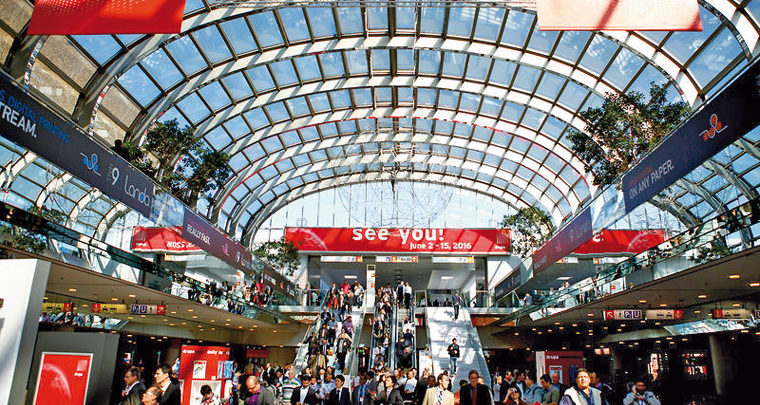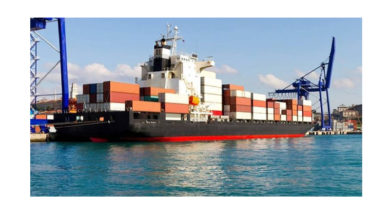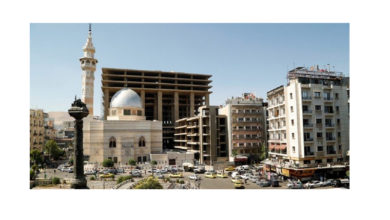2012 Year Of Rebellion

Few weeks are remaining for the year 2012 to end. The bygone year was different, exciting and an eventful one, which left behind a tangible mark on the printing industry and brought with it significant economic mobility.
Year 2012 or ‘Gangnam style, as some would like to call it contributed in mobilizing the printing industry in a dramatic way. The Oscar of 2012 definitely went to drupa, which was the most famous event that happened last year. Apart from that, Sandy hurricane, the acquisition of manroland by Possehl and Langley as well as the after impacts of Arab Spring are what rocked the printing industry (globally as well as in the Middle East).
Was it a better year for the printing industry or whether it was just an extension of the previous year and what were the major projects and deals done by printers? By finding answer to these questions and going through the opinion of the printing industry, ME Printer brings to you the printing scenario in 2012.
 Year of Olympics
Year of Olympics
Year 2012, which was the year of the Olympics, also hosted the ‘Olympics of the printing industry – drupa 2012’, which made headlines for more than 2 weeks around the world. The same passion with which millions heard the sound tracks of the latest ‘James Bond’ movie and the passion shown to watch the ‘London Olympics’ was evidently present for drupa 2012 as well. Held from 3rd to 6th May in Düsseldorf, Germany, the exhibition was attended by about 1,850 exhibitors and over 300,000 visitors from more than 130 countries.
What made drupa 2012 different compared to the past 15 one’s was its occurrence after the great recession. The repercussions of the financial crisis had taken the world by surprise and the printing industry was pinning its hopes on drupa 2012 to regain back the ‘pulse of life.’
The printing market in Middle East was equally anticipating for the commencement of drupa. Visitors from the region swarmed in groups to see the latest trends in printing. Many events were lined up during drupa, such as the Egyptian Day which was organized by the Egyptian Chamber of Printing and Packaging on May 7. The event was held in the presence of an Egyptian delegation and was inaugurated by Bernhard Schreier, then CEO of Heidelberg and Chairman of the drupa 2012 exhibitors’ advisory board.
Drupa 2012 saw the conclusion of some major deals, which were first of its kind in the Middle East. Notable among them was the deal made by Central printing Press in Jordan. They bought a Speed master XL 106 from Heidelberg, which is the first such machine to enter the Jordanian market. Fujifilm also announced the sale of their INCA ONSET Flatbed printer to Caravan Industries in Saudi Arabia. Al Mawrid from UAE bought a Gallus, Sidema, a packaging printer in Lebanon contracted for a KBA Rapida 105, Al Shohada press in Iraq invested in three finishing systems from Muller Martini, Spectrum in UAE signed for a Kodak Nexpress, while the University of Imam Mohammed bin Saud in KSA entered into contract for a manroland R 708 P press from Al Khorayef.
Visitors from Middle East were all admiration for drupa 2012. According to Abdullah Al Muallem, General Manager and owner of Khaleej Affan press in KSA; drupa showcased the latest technologies in digital printing and had given equal space to digital along with conventional technologies.
Drupa also left clear signals as to where the industry is heading to, especially in the Middle East. Yousef Hammad, Marketing Manager of Central press in Jordan emphasized that the show was excellent and has helped to expand his horizons by getting to know the modern equipments used in printing.
As Olympics was a ‘mine of opportunities’ for London dwellers, drupa also proved that the printing industry, despite the challenges it has gone through, has in store a bag full of opportunities.
Congestion again!
Traffic jams and long line of cars returned to UAE in 2012, especially in the Emirates of Dubai and Sharjah. This indicated that the population is back on track as in yesteryears and so is the economic condition. Reports stated that UAE, especially Dubai regained its former glory. Dubai’s economy recorded a growth of 4% in 2012 and though it is still too early to provide an opinion about it, it’s clear that economic recovery is on the door steps.
Congestion was not only limited to the streets, but it was visible everywhere. It was evident in the outdoor advertising space, on roof tops of buildings and even on elevator doors. According to statistics issued by the Pan Arab Research Centre (PARC), the volume of the advertising expenditure spent in UAE for the year 2012 grew from 4.23 to 8.4 billion dirham.
Competition heats up
Intense competition and the growth of printing presses were the most prominent trends in the Saudi market. Presses in Saudi Arabia announced many deals, especially for digital machines. Anas Mirza, founding partner of Quick Print in Jeddah says that the printing market in 2012 was good compared to previous years, which saw the company’s business growing, especially in the field of digital publications.
He adds, “Business performance has been very good this year and we have been changing inks almost every day. We print approximately 10 to 15,000 editions per week, which means a total of 100,000 editions at end of the month.”
Studies indicate that the printing industry in Saudi Arabia has grown at an annual rate of 7.5 to 8.3%, and was not affected by the political instability in neighbouring countries. Dr. Saad AlDosarry, a printing expert and scholar opines that growth will continue in the Saudi market and there will be a steady increase in government spending year after year. He added that despite the lack of vision and planning usually seen in the Saudi market, the country still kept pace with modern technology in the field of printing.
Promising Market
Amid increasing competition in the region, Qatar has gained its place in the printing map of Middle East. Especially with the country making a large number of deals in 2012 and after being nominated to be the fastest growing market in the printing and publishing sector.
According to the World Organization of printing and packaging, the volume of printing and publishing in Qatar reached about US$ 150 million in 2012, recording an increase of 50% from 2009, and adding to a 2% growth in the MENA printing scenario.
Ahmed Shimi, Managing Partner at Quick print in Qatar observes that couple of years back the printing industry was not as active and comprised of only 75 small to medium presses. “Today the condition has changed. Owing to the development in Qatar, big investments are now pumped into the market, which is stimulating the printing industry to a large extent. We are now working 24 hours to meet the high demand arising for publications.”
Post Arab Spring
Arab spring was a milestone in the history of Middle East at all levels – politically, economically and even socially. Four Presidents were ousted at once by popular protests that blew across Tunisia, Egypt, Libya and Yemen. The task of rebuilding the foundation of these countries has given new ambitions and aspirations to the people in these regions.
The re-building mission is going to be a tough test as budget deficits, recession, rising unemployment, spread of corruption and poor living conditions pose as barriers before these nations. IMF (International Monetary Fund) was more optimistic about the economic performance of the revolution hit countries. In its latest report, IMF predicted that the economies of these countries are moving towards improvement and will have a growth rate of more than 4% in 2012 as a result of political stability.
Jasmine Revolution
Tunisia, which sparked the Arab Spring, is witnessing an improvement: post-revolution. Trade signs, publications, posters are re-appearing on the streets and according to advertising and outdoor personnel’s, the political openness in the country has reflected positively on the country.
Mounir Ben Ali, Owner of an advertising agency in the country believes that the current situation in Tunisia has contributed in increasing the production process in presses. He added that some political parties have even purchased private presses to print their publications.
Motherland
Egypt or ‘Motherland’ as Egyptians would like to call was the most observed nation, before and after revolution. Egypt stands second in line, after Saudi Arabia, when it comes to economic structure and GDP rate. Despite the deteriorating economic situation in Egypt (post-revolution), the Egyptian economy remained intact to some extent thanks to the light heartedness of Egyptians who took everything with a touch of humour. Like other sectors, the printing industry in Egypt went through a critical stage during which high prices of printing materials and declining print orders threatened the existence of presses. According to reports, in Egypt there are over 4375 presses, which are officially registered and about 1480 un-registered presses that employ about 150,000 workers.
Though Dr. Mohamed Morsi emerged as winner in the Presidential election, the real winners were in fact printers. Presses in Egypt considered themselves lucky after the announcement of the elections. It was a ‘Kiss of life’ for them, as cash flowed into the market to meet the printing demands of the candidates. Local media and economic experts reported that the election revived the printing market, as a total budget of 3 billion Egyptian pounds was spent during this period. This amount, according to experts, is the highest budget ever spent in the history of Egypt.
Ahmed Sharif, Owner of a press in Cairo says, “After the January 25 revolution, the market was really down. It pumped back after the announcement of the presidential election. It not only recovered our business but has given us new hope.” Shelby, another press owner commented, “The period after revolution was really worse, we couldn’t provide wages to our employees and there was a lot of uncertainty. After the elections, situations have become different. Today we have to work more than 20 hours to meet the job demand.”
Ahmed Sharif, Executive Director of Five Stars Graphic believes that the improved market performance points towards the economic and political stability in Egypt. He expressed his confidence in the potential of the printing market in Egypt, which according to him will soon overcome the current stage.
Rebuilding
Yemen too caught world attention when President Ali Abdullah Saleh was ousted from his post following a series of protests and demonstrations that continued throughout 12 months. The re-building process was indeed tough. In a statement to the media, Finance Minister, Sakhr Al Wajeeh sounded optimistic about the economic performance of the country. He stressed that Yemen’s economy has recorded a growth rate of 2% after revolution and that an emergency budget of US$ 10 billion was released in order to rebuild the country.
The year 2012 for Yemen can be also called as the ‘Year of Construction’. Many expansion and real estate projects were done during this period; many printing presses were part of these expansion plans. The foundation for textbook printing announced their intention to launch a new production line in Aden, which includes the installation of 2 printing machines worth 600 million riyals. The project aims to double the production of the facility and enhance the quality of its publications. Meanwhile, Ba-Kathir foundation also signed an agreement for a CtP that’s worth half a million Euros in order to complete its modernization program. Ba-Kathir also revealed another project estimated 20 million riyals, which would be utilized for the renewal and replacement of its equipments and printing capabilities.
Printers in Yemen were optimistic about their future. Mahmoud Saeed, Director General of Al-Thoraya Advertising said that the market in Yemen has started to regain its vitality. “The situation in Yemen is quite promising for all workers in the printing and advertising sector. Thanks to the new political scenario, we are seeing a positive outlook in all quarters of the society.”
Mahmoud said that the revolution in Yemen was undoubtedly a difficult phase for workers in the printing sector, as there was continuous disruption of electricity and fuel shortages. “Last year our loss reached a total of 20,000 dollars, whereas before the revolution we used to get a profit of 100,000 dollars annually.”
Revolutionary thirst
Libya, which freed itself from the rule of Gaddafi, went into elections in 2012. It was the first election in the country, almost after a gap of 50 years. Despite that, advertising campaigns were visible on a limited scale, and candidates and printers related it to the lack of printing equipments and facilities available in the country.
On the other side there were some positive responses, which resulted in the recovery of printing presses in the country. More than 300 daily and weekly newspapers were launched in this phase, though they lacked experience and financial back up.
In Benghazi alone 180 newspapers were newly printed and published. Awad Al Shehri, Editor of Tobruk Al Horra comments, “Earlier there was monopoly and we didn’t have freedom of speech.” He pointed out that most newspapers were focused in bringing out local issues, discussions on democracy, constitution, elections etc. In Libya, many press organizations were given support by civil societies, local councils and businesses. The Transitional National council offered assistance to journalists by promoting printing and through the disbursement of pensions to ex-journalists of former General Establishment for Press.
On the Waiting List
The printing market in Syria is still in a poor state due to the tidal wave of protests that broke 20 months ago. No one knows exactly the real situation of Syrian economy due to the blackout imposed there.
Nemat Shafik, Deputy Managing Director of the International Monetary Fund observed that growth will slow down in the coming years in Syria. Hassan Tarabichi, Production Manager at Tarabichi printing and packaging says that those presses near to the line of fire were the most affected, especially commercial printers. He added that packaging presses were able to survive despite many obstacles it faced. Lack of security and erosion of the Syrian economy have added fuel to the state of the printing industry. Transportation problems and sharp rise in printing material prices have also put additional burden on printers here.
Spectre of Instability
Lebanon, the ‘Printing hub of ME’ had its share of downturn in 2012. The country had a modest growth rate of 3.8% in all sectors including the printing and publishing sector. Though there had been crisis, many major deals were signed in 2012, such as the Yemen Press signed for a Kodak CtP XL, which according to the company was first of its kind in the Middle East. Sidema packaging also bought a KBA Rapida 105 at drupa.
In 2012, the printing syndicate once again renewed its confidence in Joseph Sader, as he was re-elected as Chairman of Printing Chamber, along with six new members. Without doubt, the changing economic situation as well as the changing state of affairs in Syria and Lebanon will determine the path that the Lebanese economy will take in future.
Improvement or Fluctuation
In spite of the tensions witnessed in neighbouring countries, Jordan was able to improve its position last year. Youssef Hammad, Marketing Manager of Central Press in Jordan says that regardless of the fluctuating condition in the country the printing market has given a good show.
Badr Safadi, owner and general manager of Feras printing press opines that the growth rates climbed in 2012 despite unfavourable situations. “Regardless of the volatile conditions, demand is growing day after day, though the quantities printed have come down. In the past, if customers asked for thousand or two thousand copies, now it has come down to 500 or less. Though quantity has become less the demand still exists in Jordan.”
 Reconstruction
Reconstruction
When we talk about Iraqi economy, we have to certainly consider the debt it has piled up over the years. It is estimated that about US$ 130 billion remain unpaid over the years, owing to the long siege of wars happening in the country. According to the printing presses, marginalization of presses by government institutions is one of the major obstacles faced by the printing sector. The government institutions such as the Ministry of Education and the Ministry of Culture are printing jobs worth billions in neighbouring countries, citing reasons like slow delivery time, poor quality and high price in Iraq compared to the printing service available in neighbouring countries.
Ghada Al-Amely, General Manager of Al Mada newspaper in Iraq opined, “People still prefer to publish books rather than publishing them on websites. The newspaper industry has still a long road to travel.”
In 2012 the country signed large number of contracts and many investments were made that helped in decreasing the dependence on presses in neighbouring countries. The major contracts which were signed during the year 2012 include Abbasia press signing for a US$ 6 million Heidelberg production line, Al Shohada foundation investing in three finishing systems from Muller Martini, Al Wifaq Press ordering a Goss M 600 press and the opening of the Baghdad Central Press, which is worth half a million dollars, which when completed can print all kinds of publications including magazines and newspapers.
According to workers in the printing industry more than 500 presses are re-surfacing and are gradually improving their conditions. Haider Al Rubaie, Director of Al Rubaie Press opines, “The situation is changing for the better. Huge budgets are allocated by the government for the development of the economic infrastructure and trade. We have a fertile and ancient printing market in Iraq and undoubtedly only a better economy and political condition will improve the state of the printing industry.”
New Year on the Doors
As 2013 comes knocking on the door, there are waves of optimism in the printing industry. The industry views 2013 as a year of recovery, in light of the positive results achieved in 2012. Though, the printing industry has to overcome challenges such as threats posed by new media, competition between digital and offset printing as well as global slowdown, the future looks bright for the printing community.
Whatever maybe the challenges, it’s sure that it will not be severe than that faced by the printing industry during the global crisis. There was no doubt that the printing industry was able to overcome the bottlenecks and has started catching the upward curve. The past few years was a ‘test period’ for the printing industry and in the coming year the industry would have to exploit on these positive results and push itself to create a wave of recovery and restore the vitality. This is what everyone’s waiting for and we hope that the New Year will help in fulfilling these expectations.




